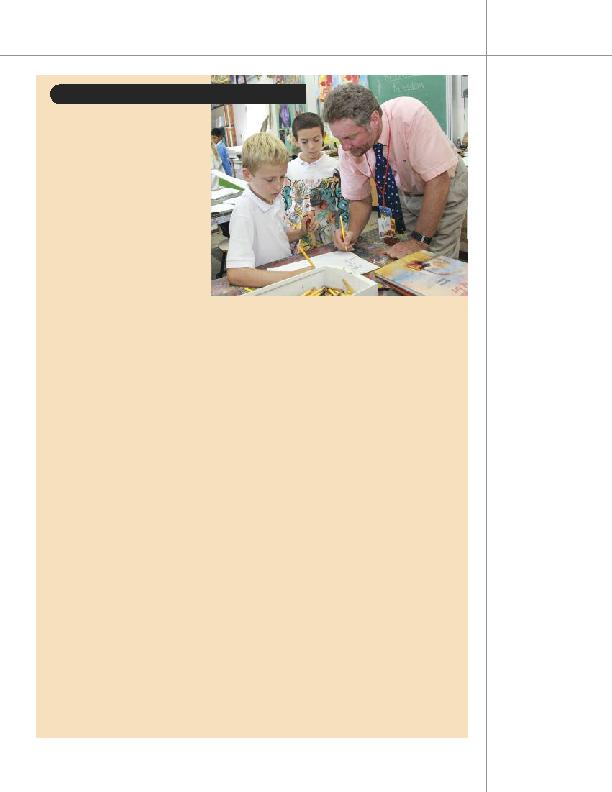
S A L T U S M A G A Z I N E
2 3
rt teacher Steven Masters's aerie-like classroom
has a piano, rows of stippled tables that look
like Pollack creations, and a potpourri of
eclectic eye candy--from student paintings and giant
palm seedpods to a collection of brass instruments
hanging from the ceiling. It's no wonder the "Northwest
Art Studio," as he's dubbed it, is one of the most
popular corners on campus.
"Visual art is about seeing things differently," says
Mr. Masters, who began his teaching career at Saltus in
1975 and after professional stints as an artist-educator
in both the US and Bermuda, returned to the School
in 2006 to teach Middle School and Upper Primary
students. "I feel it enhances young people's ability to
communicate and it teaches them that there's more
than one way to approach challenges."
The ever-ebullient teacher, whose colourful ties and
ready smile have students buttonholing him whenever
he exits his creative headquarters, believes his art
classes should be exciting for all students--whether
they're on track to become the next Leonardo or not. "I
don't see my job in any way as creating an environment
solely to cater to kids who are going to art school," he
says. "Some of them may--but more importantly, I want
them all to be comfortable with pushing their boundaries,
thinking outside the envelope, being less afraid of new
things, and enjoying the process of making decisions for
themselves. It will help them make judgments about life."
Visual art classes are a mandatory component of
every student's curriculum up to the end of Middle
School through Year 9, after which students elect whether
to continue with art as a GCSE subject and beyond in
Years 10, 11 and SGY1 and 2. Mr. Masters feels no matter
what they choose to pursue at that point, art classes
have helped students approach challenges in all their
subjects. "Perhaps, for instance, they might enhance a
history or geography paper with illustrations," he says.
"It's also about being able to view things from a different
angle, about realising there is more than one way to
conquer a problem, about simplifying stuff and become
the manager of something abstract," he says. "It's a
useful tool for life in general."
Mr. Masters, who also leads two over-subscribed
afterschool clubs--for Upper Primary and Middle
Schoolers--makes his classroom conducive to out-of-
the-box learning. He encourages students to walk
around freely as they work, to listen to music, to
collaborate with him and each other, and to make
suggestions about the task at hand.
"I remember once when I was starting work at
another school," he says. "I walked into a full classroom
and one of the children came running up to me and
pointed at another student. `There's April,' the kid said.
`She's the artist.' I thought how unfortunate that mindset
was--that one student had to suffer the burden of being
the only artist, first of all, and that everyone else felt they
might as well quit and go home!
"I prefer to create an environment where you get a
chance to make mistakes," he says, "to experiment, to
open new avenues to explore, to try something you
haven't tried before, and to find your own means of
expression. It's a process rather than a result I'm after.
That's what art, to me, is all about."
--Rosemary Jones
A
ART
in the
aerie
C
H
A
R
L
E
S
A
N
D
E
R
S
O
N
Steven Masters shows by example in the "Northwest Art Studio"

